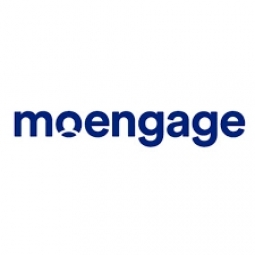Technology Category
- Analytics & Modeling - Machine Learning
- Application Infrastructure & Middleware - Event-Driven Application
Applicable Industries
- Healthcare & Hospitals
- Telecommunications
Applicable Functions
- Procurement
Use Cases
- Automated Disease Diagnosis
- Leakage & Flood Monitoring
About The Customer
Alodokter is the leading Indonesian healthcare super app, founded in 2014 by Nathanael Faibis and Suci Arumsari. The app provides an end-to-end digital solution to patients, including telemedicine, doctor booking, medical content, and health insurance services. As the leading telemedicine platform in Indonesia, Alodokter has more than 28 million monthly active users and more than 40,000 certified doctors on the platform. The integrated mobile solution for patients and doctors facilitates over 600,000 monthly patient-doctor interactions. Alodokter prioritizes its customers' health and wellbeing, providing doctor-approved health-related information and reliable consultation with medical professionals.
The Challenge
Alodokter, a leading Indonesian healthcare super app, faced significant challenges in maintaining user engagement. The nature of healthcare apps means that users typically only engage with them when they are unwell. However, during the global pandemic, Alodokter recognized the importance of reaching out to users with timely and relevant information about precautionary and safety measures. The challenge was to educate users using doctor-approved and certified resources within the app, including healthcare articles on a wide variety of subjects and topics. The goals were to increase app engagement to reduce churn and boost retention, improve click-through rates (CTRs) and conversion rates of push campaigns to uplift engagement, and increase active users across the app.
The Solution
To improve the CTRs and conversion rates of the push campaigns, Alodokter used MoEngage's AI-enabled content optimization feature. This, combined with rigorous A/B testing and personalized recommendation, allowed Alodokter to run push campaigns with improved click-through and conversion rates, increase engagement, reduce churn, and re-engage inactive users. The brand segmented its user base based on location, preferences, attributes, conversion events, and funnel drop-offs. The user journey was divided according to app events and conversion, which were then earmarked for targeted campaigns. Alodokter executed Flows campaigns based on user journeys using content optimization. The conditions used for the flow campaigns varied based on the nature of the campaign i.e. onboarding, engagement, or re-engagement. Alodokter also added an e-pharmacy feature to its product offering and floated a survey using MoEngage push notification, which resulted in significant upliftments.
Operational Impact
Quantitative Benefit

Case Study missing?
Start adding your own!
Register with your work email and create a new case study profile for your business.
Related Case Studies.

Case Study
Hospital Inventory Management
The hospital supply chain team is responsible for ensuring that the right medical supplies are readily available to clinicians when and where needed, and to do so in the most efficient manner possible. However, many of the systems and processes in use at the cancer center for supply chain management were not best suited to support these goals. Barcoding technology, a commonly used method for inventory management of medical supplies, is labor intensive, time consuming, does not provide real-time visibility into inventory levels and can be prone to error. Consequently, the lack of accurate and real-time visibility into inventory levels across multiple supply rooms in multiple hospital facilities creates additional inefficiency in the system causing over-ordering, hoarding, and wasted supplies. Other sources of waste and cost were also identified as candidates for improvement. Existing systems and processes did not provide adequate security for high-cost inventory within the hospital, which was another driver of cost. A lack of visibility into expiration dates for supplies resulted in supplies being wasted due to past expiry dates. Storage of supplies was also a key consideration given the location of the cancer center’s facilities in a dense urban setting, where space is always at a premium. In order to address the challenges outlined above, the hospital sought a solution that would provide real-time inventory information with high levels of accuracy, reduce the level of manual effort required and enable data driven decision making to ensure that the right supplies were readily available to clinicians in the right location at the right time.

Case Study
Gas Pipeline Monitoring System for Hospitals
This system integrator focuses on providing centralized gas pipeline monitoring systems for hospitals. The service they provide makes it possible for hospitals to reduce both maintenance and labor costs. Since hospitals may not have an existing network suitable for this type of system, GPRS communication provides an easy and ready-to-use solution for remote, distributed monitoring systems System Requirements - GPRS communication - Seamless connection with SCADA software - Simple, front-end control capability - Expandable I/O channels - Combine AI, DI, and DO channels

Case Study
Driving Digital Transformations for Vitro Diagnostic Medical Devices
Diagnostic devices play a vital role in helping to improve healthcare delivery. In fact, an estimated 60 percent of the world’s medical decisions are made with support from in vitrodiagnostics (IVD) solutions, such as those provided by Roche Diagnostics, an industry leader. As the demand for medical diagnostic services grows rapidly in hospitals and clinics across China, so does the market for IVD solutions. In addition, the typically high cost of these diagnostic devices means that comprehensive post-sales services are needed. Wanteed to improve three portions of thr IVD:1. Remotely monitor and manage IVD devices as fixed assets.2. Optimizing device availability with predictive maintenance.3. Recommending the best IVD solution for a customer’s needs.

Case Study
HaemoCloud Global Blood Management System
1) Deliver a connected digital product system to protect and increase the differentiated value of Haemonetics blood and plasma solutions. 2) Improve patient outcomes by increasing the efficiency of blood supply flows. 3) Navigate and satisfy a complex web of global regulatory compliance requirements. 4) Reduce costly and labor-intensive maintenance procedures.









